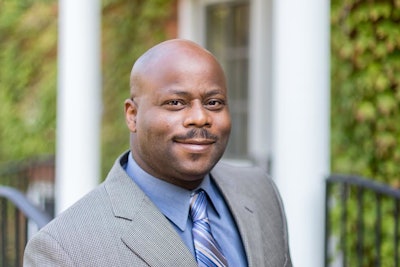I, Adriel A. Hilton, a young Black professional at Southern University at New Orleans (SUNO), wrote an op-ed in Diverse Issues in Higher Education, entitled “Are career paths of young Black professionals in higher education being impeded by implicit racism?” I concluded that the answer is yes. Dr. Adriel A. Hilton
Dr. Adriel A. Hilton
Referencing Professor Pearn Kandola’s article, How Micro-incivilities Can Impact Wellbeing, I outlined the various ways in which young Black professionals in higher education are affected. These include depression, burnout, poor work performance, and work-related stress.
I also asserted that I only see the problem of micro-civilities directed toward young Black professionals in higher education as a vicious cycle, with no one offering a clear solution—until now. My cowriter, Peter St. Jean, Interim Dean, College of Arts and Sciences & Professor of Sociology at North Park University, and I are suggesting training in High Impact Cultural Competency (HICC) (Vaughn, 2007) as a potential solution.
“We are under no illusion that micro-civility related problems will suddenly disappear with implementation of HICC,” states St. Jean. “We are, however, hopeful this recommendation is a positive step in the right direction toward some sort of awareness, understanding and resolution.”
Although a full discussion of HICC is beyond the scope of this opinion editorial, we begin with the working definition proposed by Billy Vaughn and the Diversity Officer Magazine: “…an ability to successfully negotiate cross-cultural differences in order to accomplish practical goals.” Vaughn and his colleagues identify HICC as having four major intertwined pillars: awareness, attitudes, knowledge, and skills. St. Jean adds, “What we like most about this model of cultural competence is that it departs from other approaches that seem to focus on awareness as the end goal.”
We see many cultural competence training models that focus on getting people to appreciate the innerworkings of the cultures of others without first establishing sufficient intentional insights into the learner’s own culture. Vaughn’s HICC model has intentional active ingredients that we subdivided as both intra and inter competencies.
The intra dimensions consists of one’s own awareness and attitudes. This would focus on dispositions, personalities, blind spots, preferences, social conditioning, consciousness, subconsciousness, values, beliefs, and other relevant dynamics associated with the learner and his or her own culture.
The inter dimensions relate to the knowledge and skills pillar of the HICC model. The intercultural knowledge focuses on getting to know individuals from other cultures and, as a result, identifying alignments, misalignments, and ambiguities his or her own cultural has toward others to form an understanding from both sides.
For example, St. Jean has encountered several instances where students complained about the white-savior treatment they received from professors who make the following types of statements to young Black men: “I know that, as a Black man, your people are faced with many challenges, such as a poor high school education, high crime, and family disfunction. Here is how I can help you to succeed in my class.”
Perhaps, were these professors more aware of the cultural dynamics of white saviorism and associated attitudes, they may have better awareness of how to interface with a Black male student. Such intra cultural awareness by the professor could lead to a more sensitive choice of words, creating an attitude of understanding and trust between both parties. Dr. Peter K. B. St. Jean
Dr. Peter K. B. St. Jean
We consider skills an important part of the inter dimension of cultural competence. Vaughn argues, “The problem is that the skills required to negotiate differences are too often left out of the mix. Even in a good intercultural communication course, so much theory may be presented that the course does not transfer to the students’ community or the workplace in any practical way.”
Therefore, it is our recommendation that HICC initiatives on campuses unconditionally include skills activities, such as role plays and peer juries that create lively, interactive, and realistic settings where relevant difficult issues are addressed in amicable ways. My experience with peer juries in a safe environment, which I witnessed at Grand Valley State University’s Act on Racism group, was successful and would operate as a much-needed tool for HICC.
To quote Dr. Maya Angelou, “I’ve learned that people will forget what you said, people will forget what you did, but people will never forget how you made them feel.” If we truly want to change how we treat each other in the workplace, our coworkers who are different than us, we need to become aware of our own attitudes, have a cross-cultural knowledge of our peers, and learn the skills to treat each other with respect.
Dr. Peter K. B. St. Jean is Interim dean of the College of Arts and Sciences & professor of Sociology at North Park University
Dr. Adriel A. Hilton is an associate professor of Education at Southern University at New Orleans





















